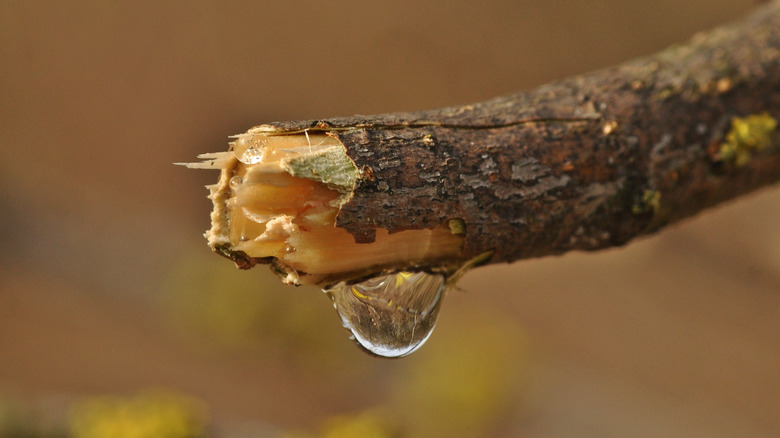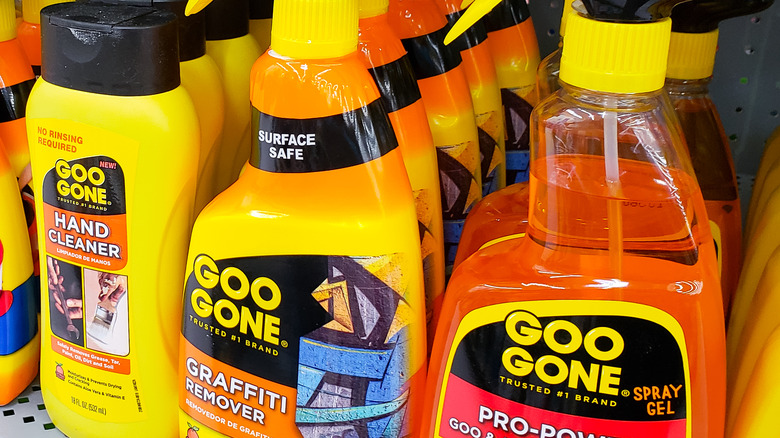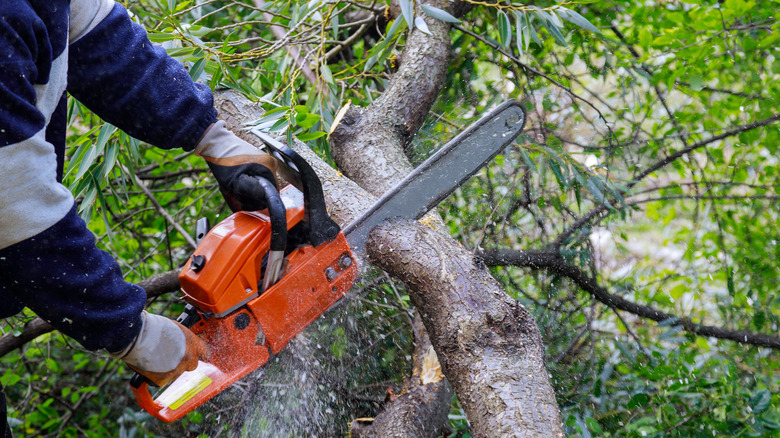How To Clean Tree Sap Off Of Vinyl Siding
We may receive a commission on purchases made from links.
In general, dripping tree sap isn't fun to deal with, but it's especially irritating if it happens to drip onto your home and your home is covered in vinyl siding. If left alone, this sticky substance will only harden and become more difficult to clean away. The key is addressing tree sap early on; when you see it, make plans to clean it sooner rather than later.
Vinyl siding is affordable, long-lasting, low-maintenance, and incredibly durable. But it's not completely impervious to damage. Tree sap can leave stains that ruin the visual appeal of your home, but that's not the full extent of what it can do. Tree sap acts like glue, which traps dust and debris that ends up becoming food for bacteria. This creates algae and mildew that can and will eventually begin to eat away at the exterior paneling of your home. Did you ever think tree sap could be so dastardly?
Tackle dripping sap as soon as possible
Time is of the essence when it comes to removing sticky tree sap from your home's vinyl siding. In a short time, this sap will begin to harden, and then be almost impossible to remove without the use of some powerful tools. When you're unable to remove sap using common kitchen cleaners, it might be time to look into pressure washing. Luckily, if you spot tree sap before it begins to harden, you can normally remove it with hand sanitizer, rubbing alcohol, or other household cleaners that are safe for vinyl. When in doubt, citrusy-smelling adhesive solvents like Goo Gone can be pretty darn magical.
If the tree sap isn't shrinking, a power washer might be your only hope. If this is the case, you need to realize that you can cause some serious damage to your siding if you don't follow power-washing protocol. The average output for a power washer hovers between 1,300 to 1,700 PSI, according to Consumer Reports. This amount of power can easily dent or crack your vinyl siding, which is why it's so important to be informed on specific cleaning methods.
Preventative maintenance is important
All trees produce some sort of sap. Some trees have more aggressive sap than others, but what they all have in common is that the sticky substance mainly makes an appearance on damaged parts of a tree. Unfortunately, there are only two options for preventing any further sap drippage onto your traumatized vinyl siding. The first is to fully remove the tree, which can be costly (and also a bit dramatic of a choice for something so minor of an issue).
The second option is to keep up on your tree-pruning maintenance so that the tree remains a safe distance away from your home's precious vinyl siding.
If you go the pruning route, you'll also want to ensure the health of your tree and that it can heal properly from its recent trim(s). To that end, the University of Florida advises against the application of pruning sealants, explaining that these products actually slow down a tree's ability to heal by trapping moisture inside, which can promote rot, fungal growth, and decay.


